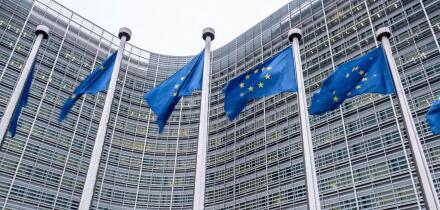This week the World Bank raised €100m via three year digitally native notes, privately placed, for the first time on Euroclear’s digital financial market infrastructure distributed ledger technology platform.
The platform facilitates the creation, issuance and settlement of fully digital international securities governed by English law.
It uses blockchain technology that enables instant primary settlement between the issuer and the dealer on the platform, and then plugs directly into Euroclear’s current legacy ecosystem.
There was no central bank digital currency (CBDC) element to the transaction.
It differs to other DLT solutions in that it offers same day settlement with only limited input from investors, given that they already have accounts with Euroclear.
Secondary trading, custody, coupon payments and listing tall take place in the legacy system.
The offer was priced at 10:12 London time and the primary settlement on D-FMI was done within the hour. Investor tickets were matched at 1pm.
The 3.399% October 2026 notes were rated AAA by S&P, while Moody’s issued at par.
TD Securities was the sole lead.
Andrea Dore, head of funding at the World Bank, told GlobalCapital: “Anytime one works on something new there’s a lot of work involved. It’s a new infrastructure, so due diligence was important and our operations team was heavily involved.
“We were able to leverage our experience of having done the first blockchain bond in 2018. There was a tremendous amount of collaboration across the execution process.”
Achieving T+0 for primary settlement through the digital platform of such a long-established and regulated financial market infrastructure could mark a breakthrough in the long process of bringing bond markets on chain.
“This has a different orientation to blockchain bonds,” continued Dore. “It’s the infrastructure that was important. Scalability requires infrastructure. This infrastructure was a combination of new, existing and traditional. We were able to issue a digitally native bond that is integrated into the traditional system which means minimal work for the investor.”
Akinchan Jain, manager, head of asset liability operations at the World Bank Treasury, said that he saw “significant benefits to capital markets” from the process, including for low and middle income countries.
“The process for issuing, servicing and redeeming bonds in capital markets has not changed as fundamentally in the last 30 years, as for other areas of business,” he said.
Euroclear is one of two prominent clearing systems, so essentially every issuer and investor uses the platform.
"They have a vision for how it will grow and that appealed to us," continued Jain. "Beyond capital markets, it also appealed from a development standpoint. It can take a long time to level up local capital markets. Using some of this technology allows an opportunity for low income countries to leapfrog and move directly to the digital space rather than recreate physical infrastructure.”
Mark Byrne, managing director, European debt syndicate at TD Securities told GlobalCapital: “We’ve seen a number of digital bonds issued in different parts of the world and this utilises legacy systems more than brand new platforms in which everything is done from scratch.”
“Euroclear has built a settlement platform whereby the primary settlement between the lead manager and the issuer can utilise blockchain technology — and this happens instantly once the instructions are in.”
There’s an absence of any time delay and investors instruct settlement as normal, Byrne explained. Buyers were also able to get into the details to understand the legal and operational aspects while from a practical perspective, there was nothing out of the ordinary.
“The only unusual aspect was that investors booked their trades within quite a quick timeframe post-pricing,” he said.
“Euroclear is an established player and trusted platform in the CSD world,” he said. “There are some legal nuances and technicalities that are quite significant, though they are behind the scenes. Some of the investors did their due diligence regarding the legal nature of these notes. Investors don’t take these things for granted on a brand new project.”
With few barriers to entry on the technology side for investors, Byrne described it as a “clear next step in the evolution in the digital issuance space". He added that the process could easily be rolled out to other issuers in the market.
However, not all issuers may want to use it straight away.
“An issuer may rightly question whether it makes sense to use the process when not all investors are ready to buy through this system, and there’s no cost-saving regarding the bond spread," he said. "But the market needs pioneers like the World Bank and big institutional investor names to get comfortable with the process before it is scaled.”
European asset manager Union Investments was a buyer.
Dore added: “It was a small amount of issuance, since the focus was on the infrastructure and not the trade size, but these small trades are the ones that have the most potential to impact financial market infrastructure. It was reminiscent of when we were first working on the Global Bond. We’re hoping this was the initial step to revolutionise the entire infrastructure at which point the efficiency benefits can be truly felt.”







